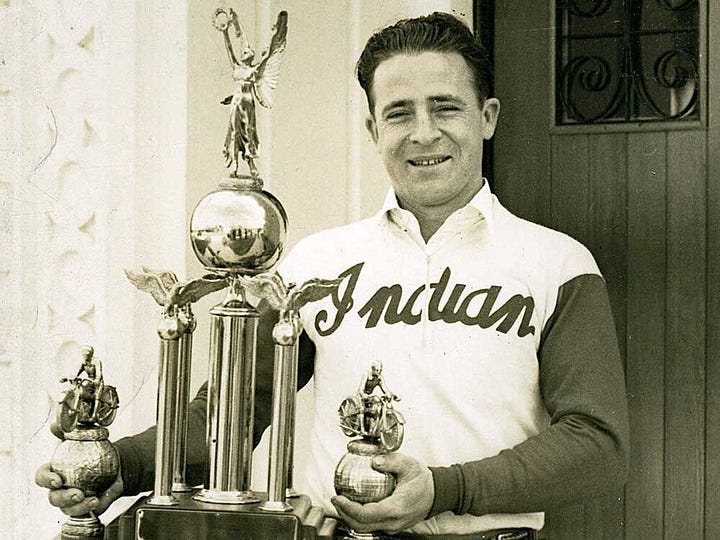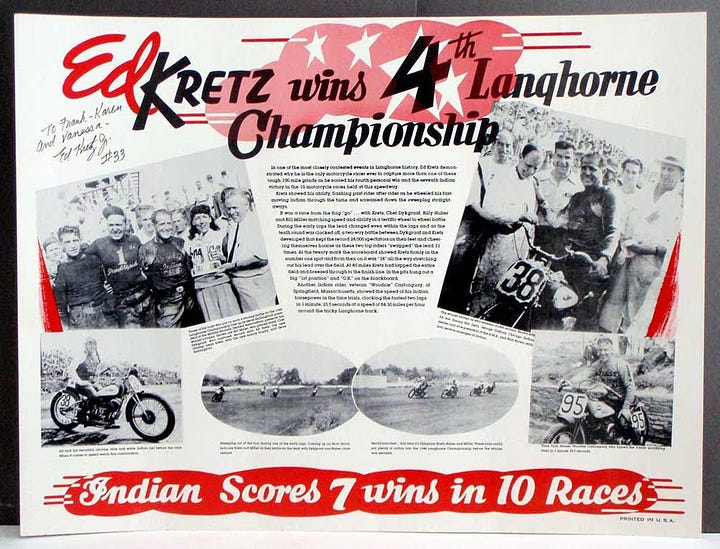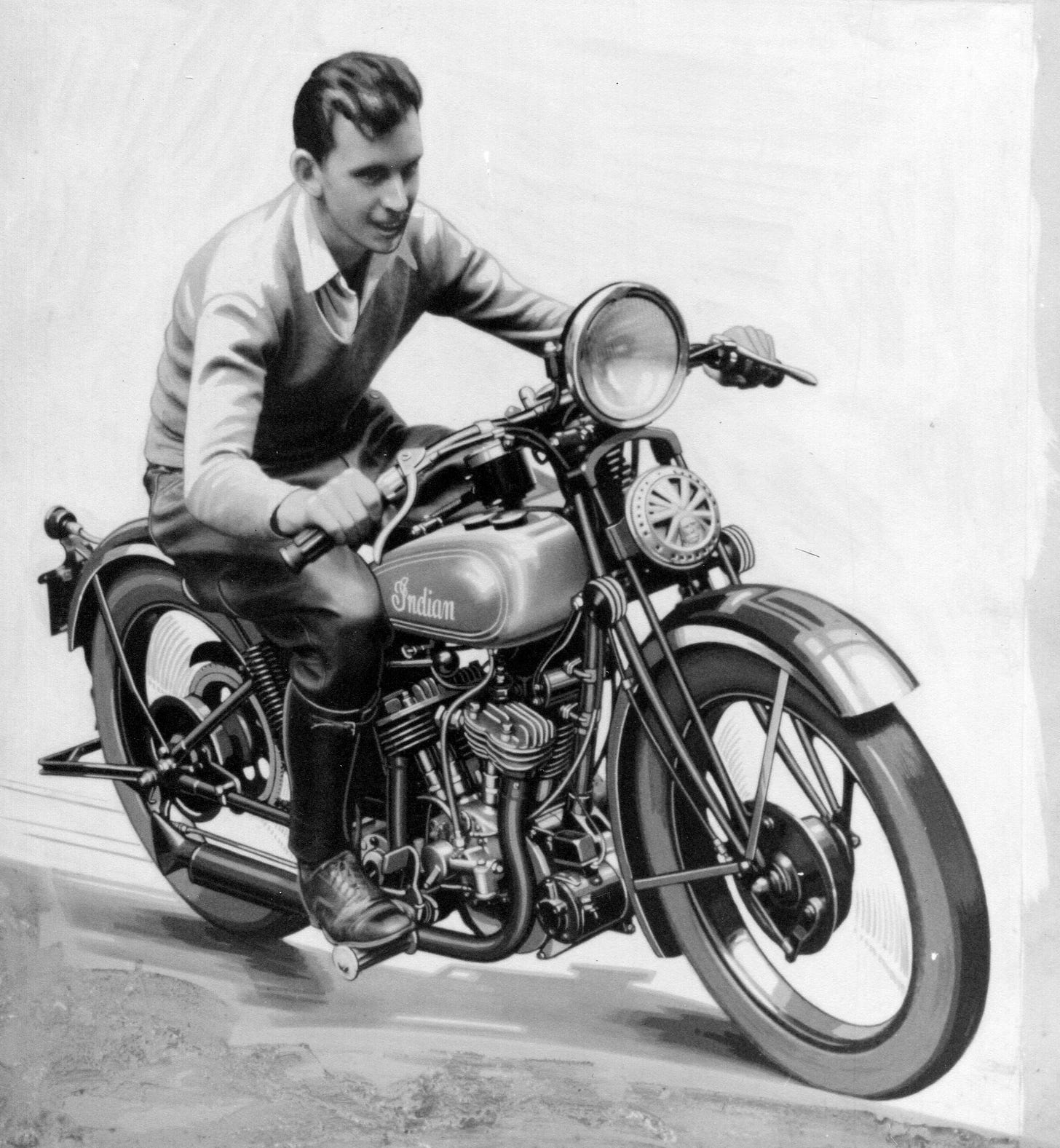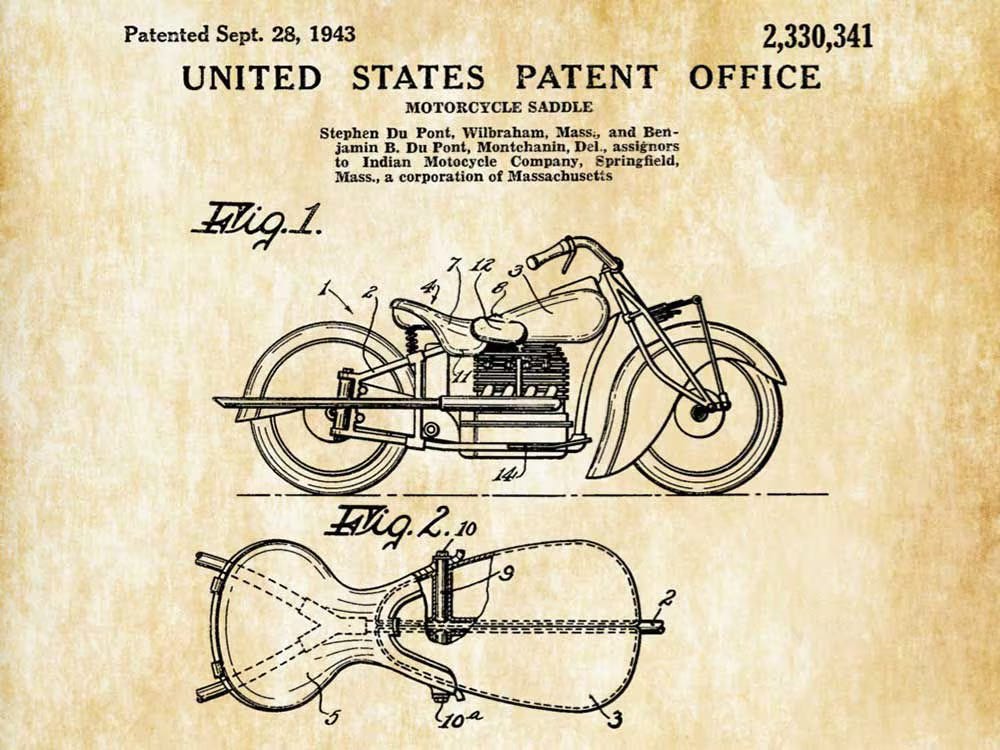Recently, I wrote about British industrialist Dennis Poore saving Norton, Triumph, BSA and other motorcycle manufacturers from ruin between 1966 and 1973. Nearly 40 years prior in the United States, Excelsior-Henderson was third place in the US motorcycle market behind Indian and Harley-Davidson.
When the Great Depression wreaked havoc in late October 1929, worldwide gross domestic product (GDP) fell an estimated 15 percent by 1932 (by comparison, worldwide GDP fell by less than 1 percent from 2008 to 2009 during the Great Recession). In many countries, the negative effects of the Great Depression lasted until the beginning of World War II in 1939. Bicycle czar Ignaz Schwinn—who purchased Excelsior in 1912 and Henderson in 1917—ceased motorcycle operations in September 1931.
How did Indian survive? We have the great-grandson of industrialist Éleuthère Irénée du Pont de Nemours, patriarch of the mighty du Pont family, to thank.
Born in 1887, Éleuthère Paul du Pont studied engineering in school. As a teenager, he built his own engine that he mounted on a bicycle. He later owned and modified an early Indian single-cylinder motorcycle.
By 1916, he established a small marine engine manufacturing plant in his hometown of Wilmington, Delaware, which evolved into a low-production automaker by the end of the 1910s. The DuPont Motors Company made popular luxury automobiles during the 1920s. The du Pont family's interest in Indian began in 1923, when E. Paul's brother, Francis, bought $300,000 worth of stock.
By the early 1930s, DuPont Motors merged with Indian Motorcycle and ceased auto production. E. Paul, 43, became the president of Indian. He put Loring Hosley in charge of operations. Under Hosley’s leadership, Indian resumed introducing annual model lineups, starting with the Model 203 Scout and Scout Pony in 1932, and the Sport Scout in 1934.
Indian introduced the 1936 “upside-down” four, which had an exhaust over intake (EOI) design, as well as models featuring instrument panels atop their fuel tanks. Stylist Briggs Weaver, a former DuPont Motors car designer, dreamed up the new streamlined designs that were to become a hallmark of Indian style.


Under du Pont, Indian was also the leading factory in early AMA Class C racing competition with rider Ed Kretz (above) becoming Class C racing’s first big star. Kretz won the first Daytona 200 on a race-prepped Indian Sport Scout in 1937. In 1938, a Sturgis-based Indian Motorcycle club known as the Jackpine Gypsies held a race called the Black Hills Classic, which evolved into the popular Sturgis Motorcycle Rally.
E. Paul himself road tested motorcycles and was involved in the development of Indian’s 841 military model, his personal favorite ride for many years. He also consulted on engineering and product design. Many members of the wealthy du Pont family became avid motorcyclists. E. Paul’s son, Jacques, became an AMA professional racer in the 1950s and competed a number of years in the Isle of Man TT. Another son, Stephen, was a member of Indian’s engineering department and contributed to the development of the Big Base Scout.
By 1939, the company was earning unprecedented profits, in part due to the military demands of the Allies at the start of World War II and the rush of domestic buyers anticipating the scaling back of civilian production during a time of war.
In 1945, a group headed by Ralph Rogers purchased a controlling interest of the company. On November 1, 1945, E. Paul du Pont formally turned the operations of Indian Motorcycle over to Rogers, then retired to his family estate in Delaware. He tinkered in his small machine shop, and passed away on September 26, 1950. He was 63, the same age as his great-grandfather when he died in 1834.
This article originally appeared on the Cycle World website in 2018, when I was Senior Editor.







I did not know... Thanks. Great photos.